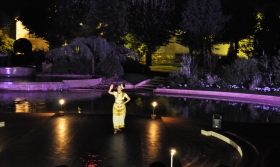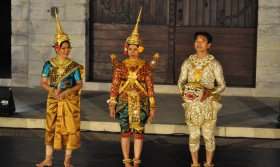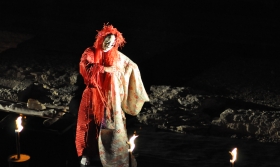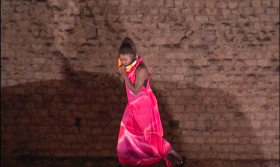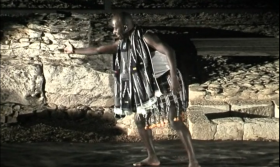- India
- For all
- 1156 vues
Cie Prana
Emanating from the historic tradition of Sanskrit (Kudiyattam) theatre and the danced rituals of Hindu temples, Kathakali first emerged in the early 17th century as a way of depicting the gods, heroes and demons from the great classical epics: the Ramayana and the Mahabharata. It is set apart from other forms of traditional dance by the complexity of its costumes and the extravagance of the stage make-up, both highly codified.
The Kathakali tradition has been passed down by a caste of artists, exclusively male, who devote their lives to the performance of these mythological roles. The training of a Kathakali dancer involves intense physical conditioning. The actors convey emotion with their whole bodies, combining subtle facial expressions and looks with hand gestures (“mudras”) and extremely precise inflections of the legs and feet. Mastering this gestural lexicon requires years of work, a vast memory and a great deal of flexibility.
The dance is accompanied by recorded music, with the story recited in a melodious chant and the “Maddalam” and “Chenda”, drums echoing the performer’s every movement and glance to intense effect. These dream-like sounds and entrancing rhythms add to the magical dimension of the performance.
Distribution and legal informations
Extract from the Kalyana Saugandikha
Extract from the Mahabharatha
Bhima: Michel Lestrehan
Panchali: Djeya Lestrehan
More informations
- Place of capture : Jardin du Musée Vesunna
- Collection : Mimos 2010






